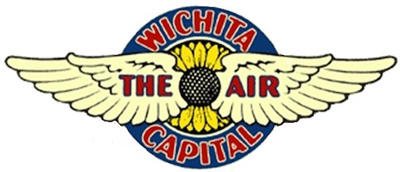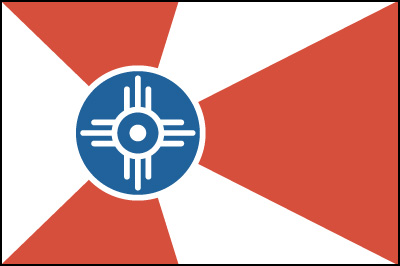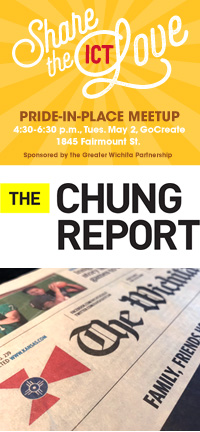
Rebuilding a brand—one flag at a time
The world we live in is based on results. For every action, there is almost always an expectation of some sort of a return on investment. Oftentimes, success or failure is determined in a matter of weeks, days or even minutes.
That’s what makes branding so frustrating. Building a good one, solid enough to grow and thrive, takes years, if not decades. It’s like watching a sandbar form—you never actually see it happening, but over time, grain by grain, it slowly begins to take shape.
In fact, there is only one thing in the entire field of marketing that is more difficult and takes longer to accomplish than building a great brand.
Rebranding.
Barth Hague, my former marketing director at Wichita State University, once described rebranding as trying to turn a cruise ship around—as much as you want to swing a 180, in reality, you have to make a lot of little turns until you finally find yourself pointed in the direction you want to go. And the thing is, unless you’re a startup, this is the boat you’re most likely to one day find yourself in one day (whether you think you have a brand or not).
It’s a huge, extremely daunting task, one faced by companies, non-profits, individuals and even cities.
The rise and fall of Wichita

There was a time when Wichita, Kan. was flying high—literally. The self-proclaimed “Air Capital of the World,” Wichita was a mecca for pioneers with big ideas and a relentless determination to turn their dreams into reality. It was a hotbed of entrepreneurship, spawning Pizza Hut, Coleman, Cessna, Beechcraft, Rent-A-Center and White Castle. (Heck, I even went to an elementary school in Wichita named after Albert Alexander Hyde, the founder of Mentholatum.) But over time, many of those companies moved on to the bright lights and greener pastures of larger cities. Those that remained were primarily aviation related, leaving the people of Wichita at the mercy of one, extremely volatile, industry.
Over time, Wichitans lost some of their swagger. They became uncertain about their worth and the worth of the city they called home. No longer was Wichita “the place to be,” it was simply a place to be. Kids grew up with the impression that Wichita was boring, lacked opportunity and was a place to escape from as soon as possible. No matter how many great things were still happening in Wichita, no matter how many incredible people still called the city home, the perception of many of the people that lived in Wichita was that its greatest days were behind it.
They say in branding that “perception is reality” and if you believe that, then Wichita had a major branding issue on its hands. If it ever had any chance of actually turning it around, it had to focus, at least initially, on its internal audience. After all, no one can love you until you truly love yourself.
Not going down without a fight

Motivated by research conducted in 2014 that verified that Wichita was suffering from a crippling lack of community pride, members of the Wichita Regional Chamber of Commerce decided to take matters in their own hands by launching a multi-platform grassroots campaign. Centered around the city’s long-standing—yet relatively obscure—flag, the campaign gave the people of Wichita something they could rally around and a platform they could use to share their love for the city.
And guess what? It worked.
As we outlined in our post about the lasting power of Elvis Presley, according to Patrick Hanlon in his book “Primal Branding,” all great brands are made up of seven components.
- The creation story
- The creed
- The icons
- The rituals
- The pagans
- The sacred words
- The leader
The Wichita flag campaign worked so well because it helped fill two voids in Wichita’s brand DNA 1) it gave people a visual icon they could associate with and 2) the flag’s 80-year history gave younger Wichitans a sense of history they never had before.
So just how well has the campaign worked? In just a little over two years, Wichita flag accounts have attracted more than 5,000 Instagram followers, over 3,000 Twitter followers and the hashtag #ILoveWichita, which was created by the chamber’s Young Professionals of Wichita group, has more than 13,000 posts. In addition, a video the chamber produced to celebrate the flag’s 80th birthday has attracted more than 30,000 views on the chamber’s Facebook page alone.
But the campaign’s real success is seen on the streets of Wichita. From stickers on car windows and flags hanging from the porches of homes throughout the city to lapel pins and murals painted on the side of businesses, the Wichita flag is everywhere and that represents branding in its most literal form.
Turning the naysayers into yaysayers
Piggybacking on the success of the chamber’s campaign, numerous other organizations have jumped in to lend a hand.

The Greater Wichita Partnership, where I formerly served as communication director, started the Perceptions Task Force (PTF), a group that holds regular community pride meetups to, as PTF co-chair Jerry Jones put it, “help to turn the naysayers into yaysayers.”
Visit Wichita, an outward facing tourism organization, began airing TV commercials in Wichita they normally reserve for outside markets to help remind the people of Wichita of all of the great things they have right here at home.
Fidelity Bank, who helped lay the groundwork for the current swell of Wichita pride with its 2012 “Bravely Onward” advertising campaign, sponsors The Chung Report, a website that provides research and insight into Wichita’s biggest underlying issues.
Even the city’s newspaper, the Wichita Eagle, prominently displays the Wichita flag on top of each and every edition.
And that is just a small sample of the numerous local businesses and organizations chipping in on the ongoing rebranding of Wichita.
Just the beginning
As I mentioned at the beginning of this post, the rebranding process is a long one—and in Wichita’s case—there is still a long way to go and some critical brand components that have yet to be identified. To be successful, those involved in the effort have to push on and reach out to all corners of the community to create a solid foundation that can be built upon and extend the Wichita brand beyond the city limits. It’s not going to happen overnight, but with a combination of persistence and patience the boat can get turned around.
